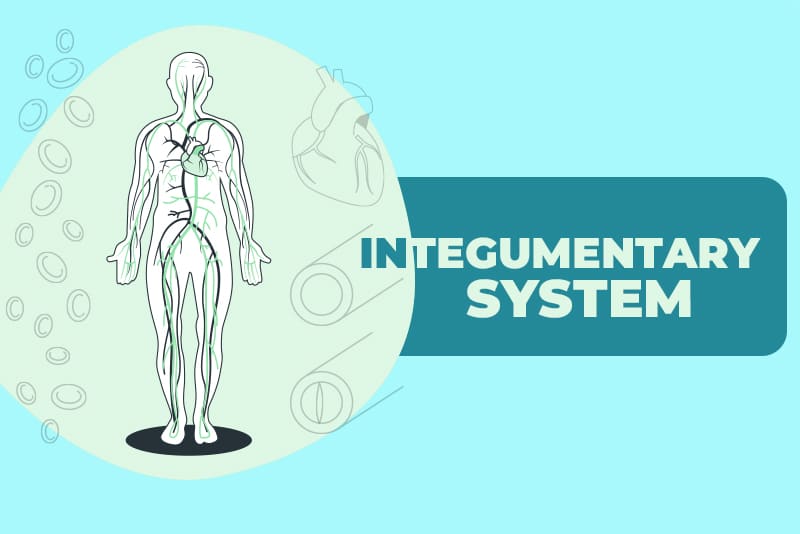The 2023 CPT code set that came into effect on Jan. 1 includes 225 new codes, 75 deletions and 93 revisions. There are three new codes in the integumentary system section, one code revision, and one deleted code. Coders should thoroughly understand these codes and the services they describe to report them correctly on claims.
Stedman’s Medical Dictionary defines the integument as: “The enveloping membrane of the body; includes, in addition to the epidermis and dermis, all of the derivatives of the epidermis, e.g., hairs, nails, sudoriferous (sweat) and sebaceous glands, and mammary glands.”
Integumentary procedures performed on the above-mentioned anatomical structures generally include incision, biopsy, removal, paring/curettement, shaving, destruction (multiple methodology), excision, repair, adjacent tissue rearrangement, grafts, flaps, and specialized services such as burn management and Mohs micrographic surgery. These invasive procedures which are performed in hospital outpatient or physician office settings should be coded with a CPT code from the integumentary system.
Code Updates for Implantation of Absorbable Mesh and Removal of Sutures
There are three new codes, one code revision, and one code deletion in the integumentary system section:
- New CPT code 15778 describes the implantation of absorbable mesh or another prosthesis for delayed closure defects.
- New add-on CPT codes 15853 and 15854 describe the removal of sutures or staples not requiring anesthesia.
- CPT code 15850, describing the removal of sutures under anesthesia, has been deleted.
- CPT code 15851 has been revised to include the removal of staples.
15778 – The New Mesh Code
- 15778 Implantation of absorbable mesh or other prosthesis for delayed closure of defect(s) (i.e., external genitalia, perineum, abdominal wall) due to soft tissue infection or trauma
15778 is a very specific code that describes the following:
- Absorbable mesh or other prosthesis
- Delayed closure of defect (to allow the wound to drain and be monitored to ensure no infectionis apparent before it is closed)
- For treating trauma or infection of soft tissue of external genitalia, perineum, and abdominal wall
The American College of Surgeons (ACS) explains: “Patients with necrotizing soft tissue infections typically result in a large, open wound that cannot be closed primarily. When the infection has resolved, absorbable mesh or other prosthesis is placed to allow healing by secondary intent until such time that a skin graft or skin closure can be accomplished”. The procedure is delayed closure, occurring after the wound was left open for a given amount of time.
Guidelines for using Code 15778
- New code 15778 has a 0-day global period and may be reported with or without other procedures performed at the same operative session
It’s also important to know what 15778 excludes. Code 15778 excludes the following:
- Repair of anorectal fistula with plug 46707
- Implantation of mesh or other prosthesis for anterior abdominal hernia repair or parastomal (thru surgically created opening) hernia repair 49591-40622
- Insertion of mesh or other prothesis for repair of pelvic floor defect 57267
- Implantation of non-biologic or synthetic implant for fascial reinforcement of abdominal wall 0437T implantation of mesh
Tropin’s Medical Coding Made Easy video (Terry Tropin, MSHAI, RHIA, CCS-P CPT, Update 2023: Integumentary System) notes that code 15778 may be used for treatment of:
- Fournier’s gangrene (necrotizing fasciitis) of the genitals
- Soft tissue infections of scrotal and perineal tissue that often require debridement and delayed closure
- Infections following initial treatment of a condition
Code Changes for Removal of Sutures and/or Staples “In the Office”
- Two new suture add-on codes: There are two new add-on codes to describe the removal of sutures or staples not requiring anesthesia, in the office setting:
+15853 Removal of sutures or staples not requiring anesthesia (List separately in addition to E/M code)
+15854 Removal of sutures and staples not requiring anesthesia (List separately in addition to E/M code)
- Revised code :15851 Removal of sutures or staples requiring anesthesia (ie, general anesthesia, moderate sedation
Code 15851 specifically describes suture or staple removal requiring general anesthesia or moderate sedation (for e.g., removal of sutures on the face of an infant).
(Code 15851 previously described removal of sutures or staples “under anesthesia other than local”).
- Deleted code : 15850 Removal of sutures under anesthesia (other than local), “same” surgeon has been deleted.
Guidelines for using removal of suture and/or staple codes
-
- Suture removal is usually done in the clinic, physician’s office and possibly ER. Code selection is guided by two aspects:
– If anesthesia is required or not, and
– If both sutures and staples are removed, or one or the other
- Add-on codes 15853 and 15854 may be reported with an appropriate E/M service for any procedure that has a 0-day global period, including the new anterior abdominal hernia repair codes
- 15853 and 15854 may be reported multiple times, but only once per day
- Since 15853 and 15854 are add-on codes to be reported with an E/M code, no modifier should be appended to the E/M code
- Use 15853 in conjunction with 99202, 99203, 99204, 99205, 99211, 99212, 99213, 99214, 99215, 99281, 99282, 99283, 99384, 99285, 99341, 99342, 99344, 99345, 99347, 99348, 99349, 99350)
- Do not report 15853 in conjunction with 15854; 15854 is sutures and staples
- New codes 15853 and 15854 should be payable when the physician who removes sutures and/or staples after surgery is not the one who performed the surgery or is not a member of the practice of the physician who did.
- If surgical code reported when the sutures/staples were put in place has a 0-day global period, this new code will allow the removal of the sutures at a later date
If the physician removes sutures or staples within the global period of the original procedure by the provider who performed that procedure, the removal is included
- 15851 is not an add-on code
- In 2023, removal of sutures or staples requiring anesthesia should be reported with code 15851 regardless of whether the physician or QHP removing the sutures or staples also performed the primary procedure.
- 15851 should not be reported for suture and/or staple removal to reopen a wound prior to performing another procedure through the same incision.
- Revised code descriptor for 15851 describes the required anesthesia as “general anesthesia” or “moderate sedation.” This does include deep sedation and monitored anesthesia care.
- The NCCI manual for 2023clarifies thatCPT codes 15851 and 15852 shall not be reported when a patient requires anesthesia for a related procedure (e.g., return to the operating room for treatment of complications where an incision is reopened necessitating removal of sutures and redressing).
Coders need to understand how to report procedures that involve the integumentary system as a significant proportion of invasive procedures performed in hospital outpatient or physician office settings involve these services. Physicians should ensure that operative reports are accurate and complete for correct medical coding and billing, to justify reimbursement for surgical services and ensure continuity of care.




